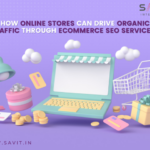As an online shopper, you crave an immersive experience that allows you to visualize how products might look or feel in your own space. While e-commerce offers convenience and selection, it often lacks opportunities for sensory interaction that could sway your purchasing decisions. Augmented reality technology is poised to change that by delivering virtual product experiences that tap into your senses. With AR in eCommerce, you’ll soon see how a new sofa complements your living room decor or try on the latest fashion styles from your favourite brands. For retailers, augmented reality represents an opportunity to forge deeper connections with customers and inspire more confident buying. The future of e-commerce is shaping up to be a highly personalized shopping experience that keeps you engaged through innovative augmented reality applications.
Augmented Reality (AR) and the Customer Experience
Augmented reality shopping allows online shoppers to visualize products in a virtual 3D space as if they were physically present. This significantly improves the customer experience by addressing one of the biggest challenges of e-commerce – the inability to experience products with your senses fully.
With AR, you can see virtual renderings of products in your own home. For example, you can see how a new sofa would fit in your living room or how a particular paint colour would look on your walls. This helps ensure products match your space and style before purchasing. AR also allows you to examine details that are hard to perceive in 2D images, like texture, pattern, and true colour. AR provides an interactive experience that engages more of the senses. You can rotate, zoom in, and pan around 3D models to view products from all angles. Some implementations even allow you to read product specifications, compare options side-by-side, and make real-time selections that update the virtual model. This high-touch experience builds familiarity and confidence in product selection.
AR leads to higher customer satisfaction, fewer returns, and increased conversion rates for retailers. Customers feel more assured in their buying decisions When they can fully visualize and interact with products. AR also creates an exciting, futuristic shopping environment that keeps customers engaged longer—more time spent exploring leads to more opportunities to make a sale. AR in e-commerce helps provide an immersive, multi-sensory product experience that delights customers and benefits businesses. As technology continues advancing, AR will transform online shopping into an interactive adventure.
How AR Enhances the Online Shopping Experience
Augmented reality shopping allows online shoppers to visualize products in a simulated 3D environment. This enhances the e-commerce experience in several ways:
Product visualization
With AR, you can see a realistic 3D rendering of a product and manipulate it, viewing it from all angles. This helps give you a better sense of the product’s size, shape, and details. For example, you could see how a piece of furniture might fit in your living room or view the intricate details of a piece of jewellery.
Try before you buy
AR eCommerce Trends allows you to virtually ” try on” products like makeup, glasses, and clothing. Many cosmetic and eyewear brands offer AR apps that use your phone’s camera to simulate how a product would look on your face. Some clothing retailers let you upload a photo of yourself to see how an outfit might fit. This can give shoppers more confidence in their purchases.
Product customization
Certain products like furniture, wall art, and flooring can be customized and viewed with AR. You can see how different fabrics, finishes, and configurations would look in your space. This makes the customization process much more engaging and helps avoid disappointment with the result.
Memorable experiences
AR and Customer Experience is highly interactive and immersive. This can create an unforgettable customer experience that fosters brand loyalty and word-of-mouth marketing. When people have an enjoyable experience with a product or brand, they are more likely to become repeat customers and recommend it to others.
By delivering an interactive and sensory product experience, AR has significant potential to transform online shopping. As technology continues advancing, AR apps will become even more sophisticated, intuitive, and ubiquitous. This bodes well for e-commerce retailers looking to provide their customers with the most compelling digital experience.
Key Benefits of Implementing AR in E-commerce
- Enhanced Product Visualization
AR in eCommerce allows customers to view products in a simulated 3D environment. They can see products from multiple angles, zoom in to view details, and in some cases, manipulate products to see how they function or fit together. This enhanced visualization helps customers determine if a product meets their needs before purchasing. For furniture and home decor, AR enables customers to view items in their own space to determine how pieces will fit and coordinate together.
- Improved Customer Confidence
The ability to fully visualize a product instils confidence in customers that they are making the right purchasing decision. This can help reduce returns resulting from customers receiving a product that doesn’t meet their expectations. With AR, what you see is what you get. Customers know exactly what they are buying and are more satisfied.
- Personalized Experiences
AR provides an opportunity for retailers to create customized experiences for shoppers. For example, Sephora’s Virtual Artist app allows customers to virtually try on makeup and see how different products will look on their faces. This personalized experience is highly engaging for customers and helps guide them to products that suit their needs and style. Personalization builds loyalty between customers and brands.
- Operational Efficiencies
AR and Customer Experience can streamline operations for retailers in several ways. It reduces the need for customers to try on or handle products physically, decreasing the possibility of damage or wear and tear. It also minimizes returns by giving customers a clear sense of what they buy. AR-enabled virtual shopping frees up staff to focus on other tasks. For large products, AR eliminates the need to maintain samples in stores. Overall, AR optimizes the customer experience while maximizing operational efficiency.
The benefits of AR are substantial for both customers and retailers. As technology advances, AR will transform online shopping into an immersive, interactive experience that blurs the line between the physical and digital worlds. AR and its enhanced experiences will shape the future of e-commerce.
The Future of AR in E-commerce and Retail
As AR eCommerce trends advances, it will transform the online shopping experience by allowing customers to visualize products in their environments. This will help to overcome one of the biggest challenges of e-commerce: the inability to have a complete sensory product experience. AR applications can place virtual 3D models of products like furniture, decor, and clothing into photos or videos of a customer’s space. This helps the customer determine if the product’s size, style, and colour are right for their needs before making a purchase. For example, an AR app could show customers how a new sofa would look in their living room or if a jacket fits their body type properly.
AR will make product visualization and virtual try-on capabilities widely available. Customers can easily preview how products look on or in their space using their smartphone camera. This will reduce returns and increase customer satisfaction and loyalty. AR tools will provide an even more realistic product experience as they become more sophisticated. Features like material rendering, lighting estimation, and occlusion handling will make virtual products appear as part of the real-world environment. AR has significant potential to transform e-commerce and in-store retail. Merchants that adopt AR technologies early will be able to provide a highly engaging shopping experience that builds brand loyalty and boosts sales. The future of retail and e-commerce is shaping into an exciting new reality.
Conclusion
AR in e-commerce provides an Immersive Experience Augmented reality (AR) technology allows online shoppers to experience products in an engaging, interactive way. By overlaying digital images and information onto the real world through a mobile device camera, AR gives customers a sense of depth and scale that can be achieved on a flat screen. Getting an AR-enabled e-commerce site and apps is not easy. Hence, assistance from an experienced source like Savit Interactive is beneficial.
Savit uses AR and can help place life-sized 3D models of furniture, decor, and other home goods into your living space to see how they’ll look in your home. View couches, tables, lamps and more at scale to properly assess the size, design, and layout before purchasing. This helps ensure the product fits and the style matches your interior decor. AR e-commerce trends are an enticing shopping experience that immerses customers in a sensory product experience not possible on a standard 2D website. Savit’s professionals use AR which leads to higher customer engagement, satisfaction and sales. Get a competitive advantage by implementing AR technology on your site or mobile app with Savit Interactive!








































